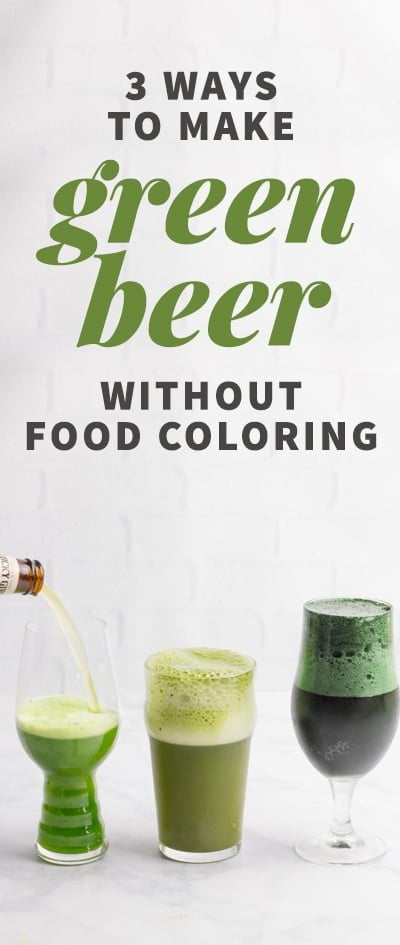
I’m gonna go out on a limb here and guess that green beer isn’t a traditional Irish way of celebrating St. Patrick’s Day. It sounds like just the kind of thing us Americans would do to (put it kindly) make a holiday our own. I mean, think about it, have you ever tried to dye a Guinness green?
Regardless of its origin, green beer is a decidedly huge part of celebrating St. Paddy’s here in the Midwest (right up there with our other favorite Irish-American way to celebrate—corned beef and cabbage). Most places just take the cheapest lite beer they have on tap, throw in a heavy hand of green food dye and call it a happy March 17th. As a rule, I try to keep the artificial food colorings to a minimum in my diet, so putting a big dose of the stuff in my lager wasn’t going to cut it. But luckily, there are quite a few all-natural green dyes that work just as well as those little plastic bottles of food coloring.
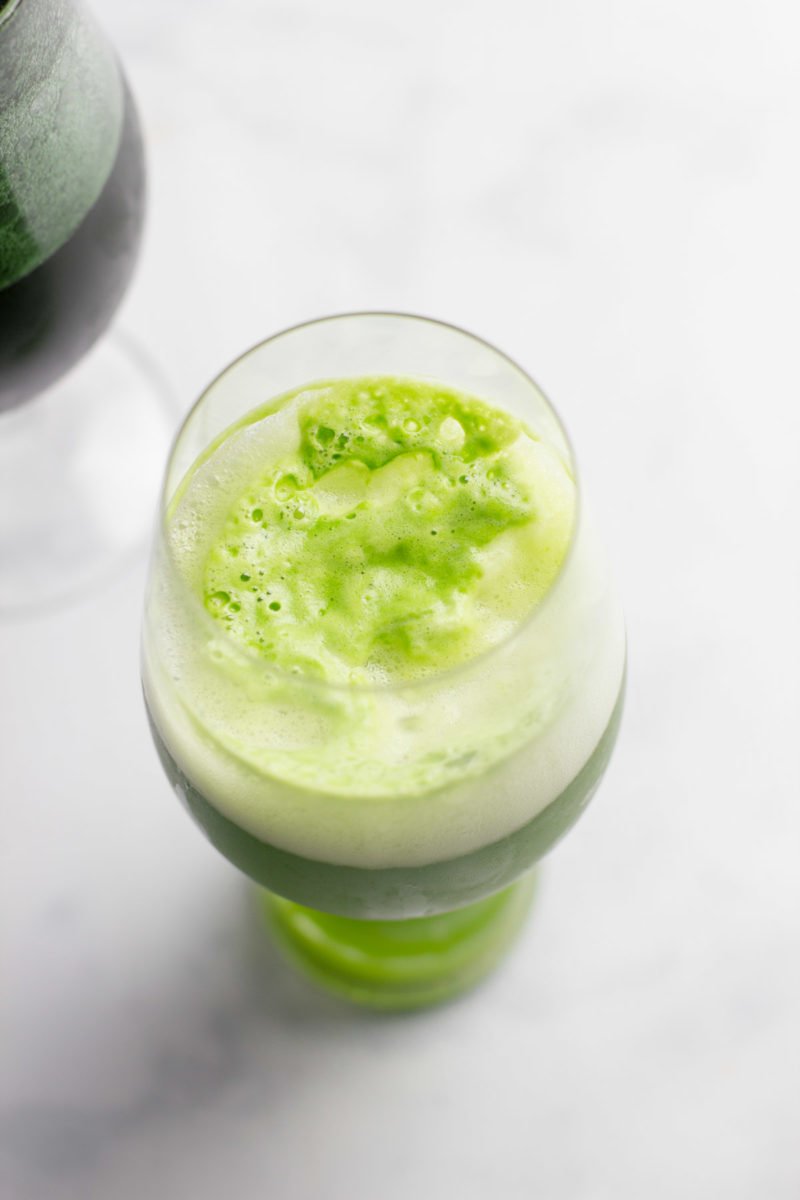
The first step to doing any kind of dye job on beer is picking the right beer. Like I alluded to above, if you choose Guinness, your results will be delicious, but, um, not green. The key is to get a light-colored beer. Now, you are free to use whatever domestic lite beer you want, but I actually prefer seeking out a craft-brewed American lager or blonde. They still have the light yellow color that allows you to dye them, but they don’t taste like water (which after years of drinking really good craft brews, is what I think all those mainstream lite beers taste like).
For these photos, I used Lucky Girl Golden Lager out of Michigan. It’s a nice, light beer (in color and in flavor), but it’s got a wonderful crisp taste that will keep you drinkin’ all St. Patrick’s Day long.
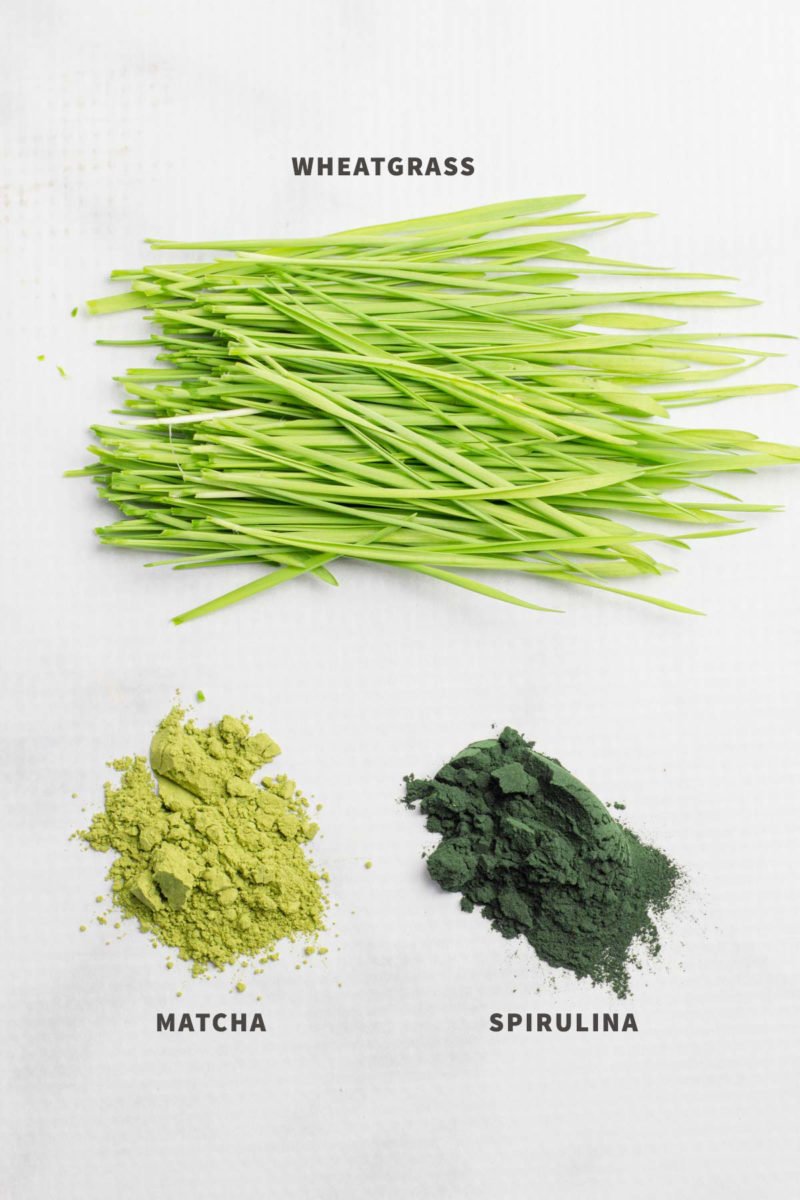
Now which of these three options you use to tint your beer depends on two big things: availability and taste. Unlike artificial food coloring, you’re going to taste these—some more than others. None of the flavors are bad, but they are there!
And then availability. If you live near a health food store, you’ll have no problem tracking these ingredients down. If you don’t? Well, maybe just tint your beer with regular food coloring and chalk it up to living in moderation. These aren’t things you can get at most “normal” grocery stores. Consider yourself warned!
A third consideration is color, and as you can tell by the photos, there are three different kinds of green here—so the coloring you choose might depend on what end result you like the best!
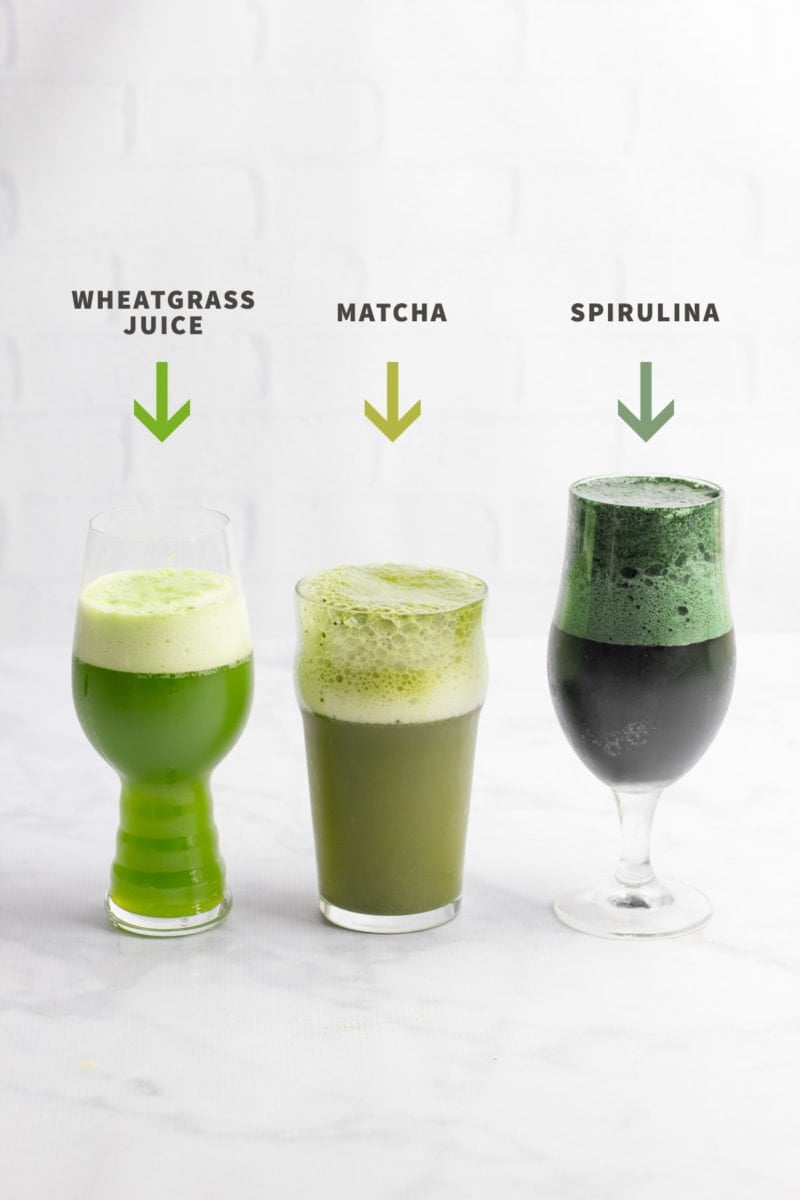
Alright, I’m going to step you through each coloring—where to get it, how to use it, the health benefits (all three have some!), and how it impacts the flavor of the beer. We’ll start first with my favorite of the bunch: wheatgrass juice.
Wheatgrass Juice
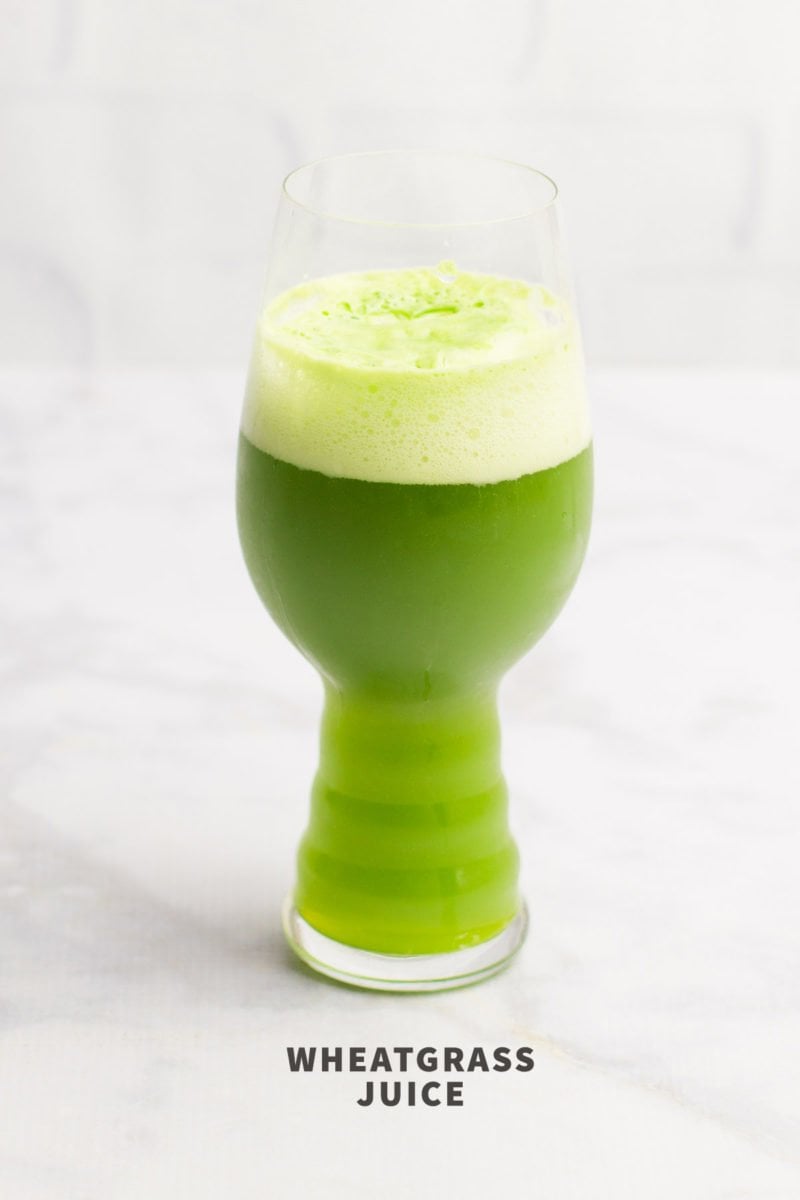
Color
Wheatgrass juice is my absolute favorite of all the colors. It’s a beautifully bright yellow-green—it really looks similar to the result you would get if using artificial food coloring. It dyes the beer evenly, and lightly tints the head. It doesn’t make the beer cloudy, and the wheatgrass juice dissolves nicely.
Flavor
Wheatgrass juice is probably the most pronounced of the three flavors, but not unpleasantly so. If you’ve never had wheatgrass before, it tastes exactly like how you’d think it would taste—grassy. You use such a small amount to dye the beer that it doesn’t overpower anything. It just adds a grass undertone to your beer. It tastes like summer! I liked the flavor of this one the most.
Where to Get It
If you have a juice bar nearby, you can get fresh wheatgrass juice from them. Another option is to make your own juice from wheatgrass. You can grow your own (it’s really easy, and I did it using this tutorial), or many grocery stores sell wheatgrass either pre-cut or in pots. I just saw it this past weekend at my regular supermarket near the fresh herbs in the produce section. To turn your wheat grass into juice, take a big handful of the cut grass and either run it through a powerful juicer, or place it and a couple of tablespoons of water in a high-powered blender (my Ninja worked great for this). Blend on high until the grass is a pulp. Then strain through several layers of cheesecloth or a jelly/nut milk bag.
Health Benefits
Wheatgrass is a natural source of many vitamins, minerals, and antioxidants. Studies have indicated that wheatgrass can help with a number of digestive system issues, including reducing the impact of ulcerative colitis and the digestive side effects of chemotherapy (source: WebMD)
How To Use It To Make Green Beer
Pour 1 tablespoon of wheatgrass juice in the bottom of a beer glass. Pour beer over top. Add more wheatgrass juice, a little bit at a time, until desired color and flavor are achieved.
Spirulina Powder
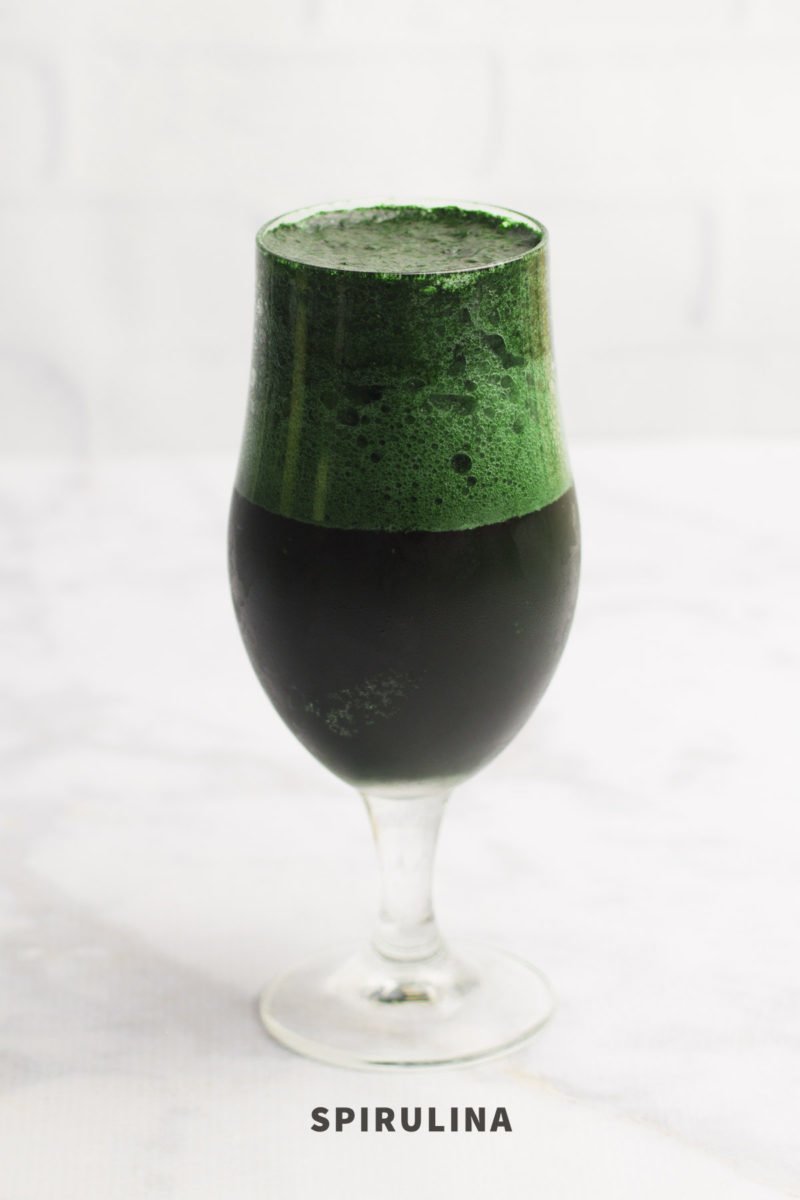
Color
Spirulina results in a more of a teal/hunter green—regardless of the amount you use. It’s really potent stuff coloring-wise, so a little goes a long way. It dyes the beer itself very dark, and dyes the head well, too.
Flavor
This one takes some getting used to! Spirulina is a type of algae, and that means it has a slightly fishy/metallic taste to it. In small doses, and with a strong beer, it isn’t bad (or even all that noticeable), but if you add too much spirulina, you’ll be pouring your green beer down the drain.
Where to Get It
Head to your local health food store and check out their bulk spices section—chances are, you’ll see a jar of teal green powder labeled spirulina. You don’t need much, so don’t let the hefty per ounce price tag scare you off. We’re talking less than a half teaspoon per beer. If your health food store doesn’t have it, Amazon does.
Health Benefits
Spirulina is packed with protein, and some studies have indicated it might be helpful in fighting infections like herpes or influenza. Some preliminary studies have also shown a connection between intake of spirulina and reduced cancer legions, improved liver function in those with liver diseases, and a reduced risk of cataracts (source: University of Maryland Medical Center).
How To Use It To Make Green Beer
Put 1/2 teaspoon of spirulina into a small bowl (or the bottom of your beer glass, if it’s wide enough). Add in a few tablespoons of beer and then whisk using a small whisk until the powder is completely dissolved. Pour into a beer glass, then add the remainder of the beer.
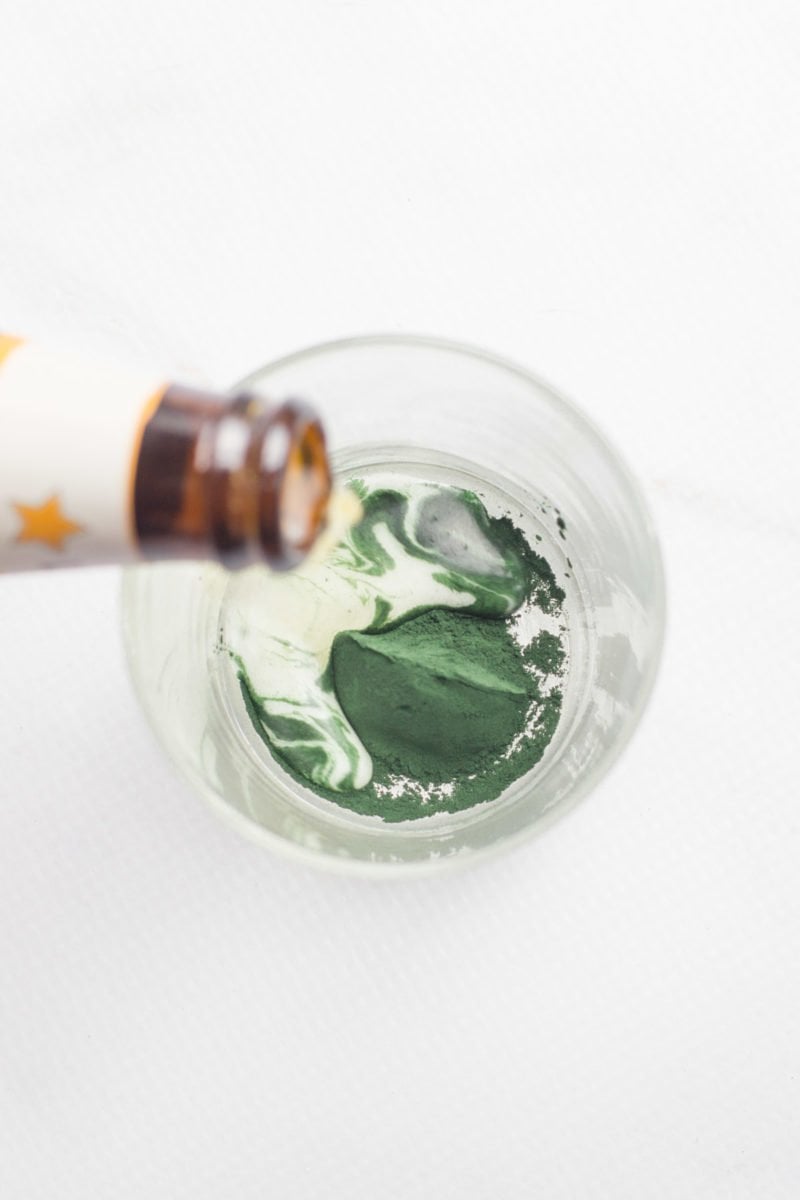
One note about spirulina: there is some sort of chemical reaction that happens that turned the head of the beer I was using very thick when I mixed in the spirulina. It was pretty cool to watch! But I did have to scoop off the foam before drinking because it wasn’t going down. Not sure if this happens with all beers or not. It was a fun science experiment.
Matcha Powder
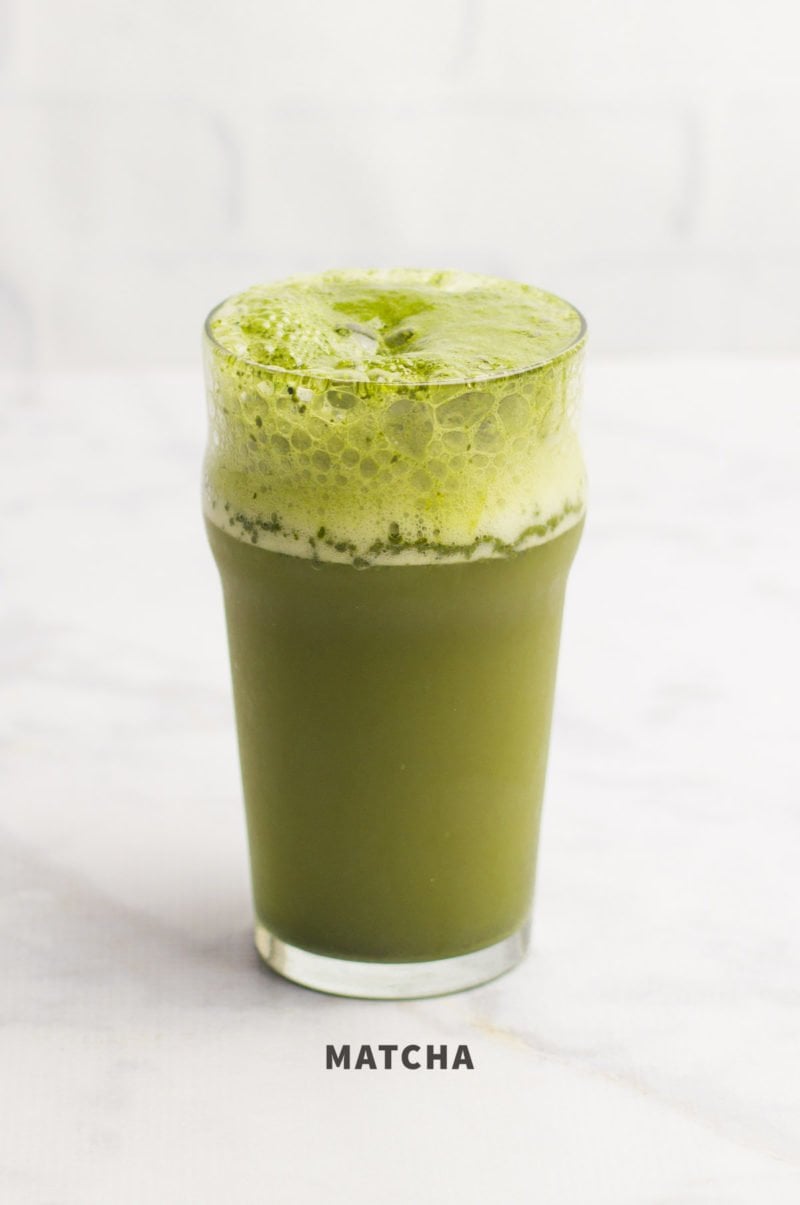
Color
Match powder turns the beer into a deep olive green—not entirely the bright Irish green we’re looking for, but still definitely in the “green” realm. It clouds the beer quite a bit, and it doesn’t mix it perfectly well.
Flavor
If you’re looking for the least impact on flavor, matcha is your choice. If you’ve never had matcha before, it’s a powdered green tea that tastes like, well, green tea! Which is a nice, mild flavor. Matcha specifically has a bit of a vegetable taste—slightly like spinach, but not overpoweringly so. Honestly, if you mix it into a beer that has any kind of flavor, you aren’t really going to taste it (there are so many brewers out there who painstakingly perfect every aspect of their brew recipes—my husband included—who are cringing at this whole entire post). If you mix it into a lite beer, you’ll probably just taste a nice, mild green tea flavor.
Where to Get It
Matcha powder has been über trendy over the past few years, so it’s the most readily available of all the options. You can definitely get it at almost any health food store, online through Amazon, and even some larger supermarkets. Check in the tea section.
Health Benefits
Green tea is packed with some of the most powerful antioxidants known. The chlorophyll that gives matcha its green color (and your beer!) is thought to supplement the body’s natural detoxification process (source The Huffington Post).
How To Use It To Make Green Beer
Put 1 teaspoon of matcha powder into a small bowl (or the bottom of your beer glass, if it’s wide enough). Add in a few tablespoons of beer and then whisk using a small whisk until the powder is completely dissolved. It may take a while to get it all dissolved—persevere. Pour into a beer glass, then add the remainder of the beer.

Alright, now you know how to make green beer without food coloring! I thought figuring out how to dye beer green naturally was super fun project, but if the thought of tracking these ingredients down and going through all this work just to dye your beer makes you roll your eyes, that’s cool, too. Either drink your beer sans green-ness or use regular food coloring. I’m not a purist, and I don’t have any allergies, so I don’t think a couple of green beers made with artificial coloring are going to put me on my death-bed.
Happy St. Paddy’s Day, everyone!
P.S. OH! Before I go, one bit of housekeeping: my husband is currently writing and illustrating an AMAZING (totally not biased here) children’s alphabet book called What Do I Want to Bee?. You can learn more about the project, the inspiration behind it (hint: it’s our adorable kid), and see a preview of the book by watching the video below.
To help us out: you can pre-order your copy right now for $25 through Kickstarter.
This is the last week of the Kickstarter, and we’re closing in our goal! A portion of all proceeds from book sales are going to a national literacy group, and we’re donating a big chunk of the printing copies to all of our local libraries. We believe in this book, and want to get it in the hands of as many kids as possible. Thank you!


